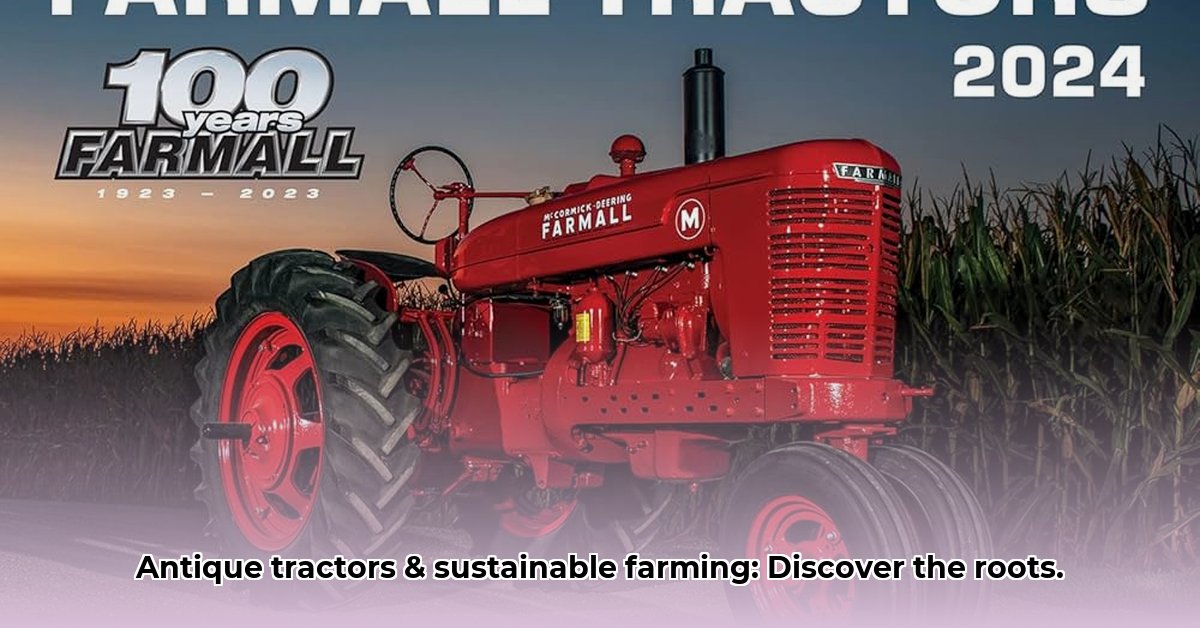
The Unexpected Popularity of Nostalgia
The 2025 Antique Tractor Wall Calendar, a seemingly simple item, has become a surprising bestseller. This unexpected trend prompts a deeper exploration: What connects the fondness for vintage farm machinery with the growing interest in sustainable agriculture? Is it purely nostalgia, or does this popularity reflect a broader societal shift towards environmentally conscious practices? The calendar's success suggests a potent link between our appreciation for agricultural heritage and a desire for a more responsible food system. The sheer volume of sales indicates a significant market interest, far beyond a niche hobby. For more stunning images of antique tractors, check out these amazing pictures.
The calendar features iconic brands like John Deere and Farmall, representing not just old tractors but decades of agricultural innovation and remarkable durability. These machines epitomized longevity, a concept central to sustainability itself—prioritizing enduring products over constant replacement. This inherent connection between the calendar's imagery and the principles of sustainable farming is subtly powerful.
Connecting Nostalgia to a Greener Future
The correlation between a calendar showcasing antique tractors and the rise of sustainable farming practices isn't immediately apparent. However, the calendar's popularity strongly suggests a connection between our sentimental attachment to traditional farming and our contemporary environmental concerns. The imagery evokes a simpler time, linked to a closer relationship with the land and a food system perceived as less industrial and more environmentally mindful.
This nostalgic appeal may reflect a yearning for a more responsible agricultural future. While the calendar's creators haven't explicitly marketed it as a statement about sustainability, its widespread appeal strongly implies that many consumers interpret it as such.
Researching the Roots of This Trend
To fully understand the calendar's success, further research is crucial. Key areas for investigation include:
Consumer motivations: Surveys and interviews with calendar purchasers can reveal their reasons for buying it. Are they driven by historical interest, engineering fascination, or a conscious connection to sustainable farming?
Environmental impact comparisons: A detailed comparison of the environmental footprints of antique and modern tractors is necessary. Do older models, despite lacking advanced technology, possess hidden advantages in terms of fuel efficiency, emissions, and overall environmental impact? This requires thorough life-cycle assessments.
Policy implications: Could this nostalgic appreciation influence policies aimed at promoting sustainable agriculture? Could lessons learned from traditional farming practices inform modern sustainable techniques?
A Deeper Dive: Comparing Antique and Modern Tractors
The 2025 Antique Tractor Calendar's surge in popularity underscores the growing interest in the environmental impact of agricultural machinery. While modern tractors boast increased efficiency and power, they often lead to higher fuel consumption and greenhouse gas emissions. Antique tractors, despite lower power, may offer a surprisingly lighter environmental footprint.
Key Considerations for Comparison:
Fuel Efficiency and Emissions: Modern tractors consume significantly more fuel, resulting in higher emissions, despite technological advancements in emissions control. Antique tractors, while less efficient per unit of power, may have a lower overall footprint due to their smaller sizes and reduced power demands.
Soil Compaction: The weight of modern tractors contributes to significant soil compaction, damaging soil structure and impacting water infiltration and root growth. Antique tractors, being lighter, generally inflict less damage on soil health.
Maintenance and Repair: Antique tractors require specialized knowledge and parts, potentially leading to higher downtime and repair costs. Modern tractors benefit from extensive dealership networks and readily available parts. However, the environmental impacts of manufacturing new parts versus repairing existing ones are significant factors.
Manufacturing and Disposal: Modern tractors frequently involve more complex manufacturing processes, potentially increasing their embedded carbon footprint. Disposal of large, modern tractors poses a significant environmental challenge. Antique tractors, although possibly made with less environmentally friendly materials, often boast significantly longer lifespans, mitigating the impact of initial manufacturing.
Economic Considerations: Modern tractors have much higher initial costs but often offer higher efficiency and increased outputs per unit time. The cost-effectiveness of antique tractors must account for potential downtime and repair expenses.
Dr. Eleanor Vance, Professor of Agricultural Engineering at Cornell University, states, “Comparing the total environmental impact requires a comprehensive life-cycle assessment, considering not only fuel use and emissions but also material sourcing, manufacturing processes, and ultimate disposal.”
The Calendar's Broader Significance
The success of the 2025 Antique Tractor Calendar may represent more than just a fleeting trend. It could signal a significant societal shift in attitudes toward food, technology, and the environment. This nostalgic embrace of agricultural heritage might be a key component in a broader movement toward more sustainable agricultural practices. Further research is needed to determine the significance of this intriguing trend; its story is far from over.